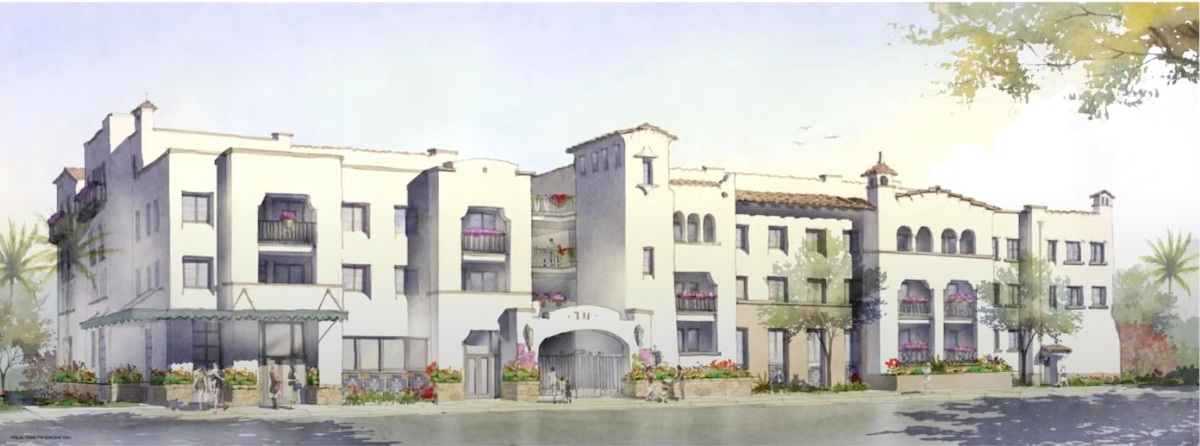Housing Project at 711 North Milpas Street One Step Closer to Completion
Santa Barbara City Planning Commission Unanimously Recommends Approval of Four-Story, 82-Unit Building

The word “awkward” got used a lot by members of the Santa Barbara City Planning Commission last Thursday as they unanimously recommended approval of the largest development to hit Milpas Street since the Santa Barbara Bowl was built during the Great Depression. By a vote of 7-0, the commissioners gave developers Ed St. George and Alan Bleecker their blessings to build a four-story, mixed-use project of 82 apartments at 711 North Milpas Street.
While many of the commissioners waxed enthusiastic about the project’s virtues — 16 affordable units being chief among them — they had little choice. That’s because the City Council had already entered into a development agreement with the developers that all but guarantees their right to build what’s been proposed.
The project has been kicking around City Hall since 2015, causing much heartburn inside City Hall and among neighborhood activists because of its looming size and angular contemporary architectural style.
When St. George entered the picture about a year ago, he offered to change the style to the more classic Santa Barbara colonial look and to include 16 affordable units. In exchange, he wanted a development agreement that allowed him to largely bypass the city’s traditional design review gauntlet.
With that deal cut, the commissioners found themselves with little room to maneuver. Commissioner Lesley Wiscomb, however, made the most of what maneuverability existed. Under her prodding, the commissioners tweaked the proposal to better define just what “affordable” meant and for how long — 90 years.
In addition, the commissioners insisted that the mix of affordable units mirror the mix of market-rate units in terms of one, two, and three bedrooms.
Sign up for Indy Today to receive fresh news from Independent.com, in your inbox, every morning.
Lastly, the commissioners insisted that local first responders and teachers be given preferential treatment when leasing the units. St. George, in particular, had said he wanted the development to cater to cops and teachers.
Jarett Gorin, agent for the developers, readily embraced all four suggestions. The project, it should be noted, grew significantly in size during the transition from contemporary to Spanish colonial. In the former, it was 45 feet high with 76 units, none of which were affordable. In the latter, the proposal is 52 feet — a few feet higher the city’s height limit of 48 feet — and included 82 units. The average size of units increased from 683 square feet to 765. The amount of commercial open yard space dropped from 16,500 square feet to 11,230.
Commissioner Sheila Lodge said she didn’t believe projects of that size and intensity were appropriate for the Milpas neighborhood, adding that the only bigger projects in town were the courthouse and the old lemon-packing plant on Quarantina Street. Lodge did acknowledge the 16 units of below-market housing.
Other commissioners were less grudging in their praise, such as Gabe Escobedo and Roxana Bonderson. Barrett Reed said it “pushed the limit of compatibility” with the surrounding neighborhood, but also said it was ”very generous” when it came to affordable housing. Deborah Schwartz praised what she called the project’s “livability factor” when it came to residents’ air and light.
As for neighborhood compatibility, Schwartz was equivocal. What is compatible, she asked, for first of their kinds in the neighborhood?



